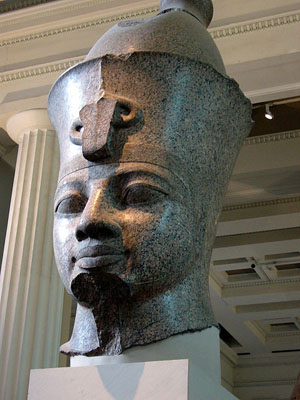
CAIRO (AP) – Archaeologists have unearthed the upper part of a double limestone statue of a powerful pharaoh who ruled nearly 3,400 years ago, Egypt’s Ministry of Culture said Saturday.
A ministry statement said the team of Egyptian archaeologists discovered the 4-foot (1.3-meter) by 3-foot (0.95-meter) statue of Amenhotep III in Kom el-Hittan, the site of the pharaoh’s mortuary temple in the southern city of Luxor.
The temple is one of the largest on the west bank of the Nile in Luxor.
The statue portrays Amenhotep III wearing the double crown of Egypt, which is decorated with a uraeus, and seated on a throne next to the Theban god Amun.
Amenhotep III, who was the grandfather of the famed boy-pharaoh Tutankhamun, ruled in the 14th century B.C. at the height of Egypt’s New Kingdom and presided over a vast empire stretching from Nubia in the south to Syria in the north.
The pharaoh’s temple was largely destroyed, possibly by floods, and little remains of its walls. But archaeologists have been able to unearth a wealth of artifacts and statuary in the buried ruins, including two statues of Amenhotep made of black granite found at the site in March 2009.
Copyright 2010 Associated Press. All rights reserved. This material may not be published, broadcast, rewritten, or redistributed.
AP-CS-10-02-10 2006EDT

